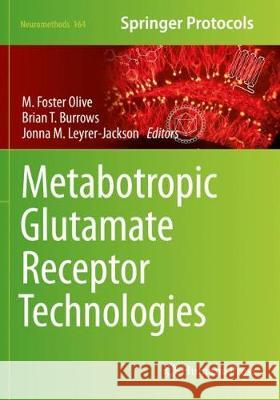Metabotropic Glutamate Receptor Technologies » książka
topmenu
Metabotropic Glutamate Receptor Technologies
ISBN-13: 9781071611098 / Angielski / Miękka / 2022
Metabotropic Glutamate Receptor Technologies
ISBN-13: 9781071611098 / Angielski / Miękka / 2022
cena 441,75
(netto: 420,71 VAT: 5%)
Najniższa cena z 30 dni: 424,07
(netto: 420,71 VAT: 5%)
Najniższa cena z 30 dni: 424,07
Termin realizacji zamówienia:
ok. 22 dni roboczych
Dostawa w 2026 r.
ok. 22 dni roboczych
Dostawa w 2026 r.
Darmowa dostawa!
This volume highlights various techniques used to study multiple aspects of mGlu receptor function. Chapters in this book cover topics such as modern approaches for the development and screening of allosteric modulators; fluctuations in intracellular calcium induced by mGlu receptor activation; dopamine-glutamate interactions in the central nervous system; methods for assessing mGlu receptor localization; and common techniques for evaluating mGlu modulation in behavior in rodents, including stress and alcohol drinking. In the Neuromethods series style, chapters include the kind of detail and key advice from the specialists needed to get successful results in your laboratory.
Cutting-edge and practical, Metabotropic Glutamate Receptor Technologies provides researchers with a starting point to address important questions regarding mGlu and its importance. Researchers working in the fields of neuroscience and physiology of multiple peripheral systems will find this volume most useful.











